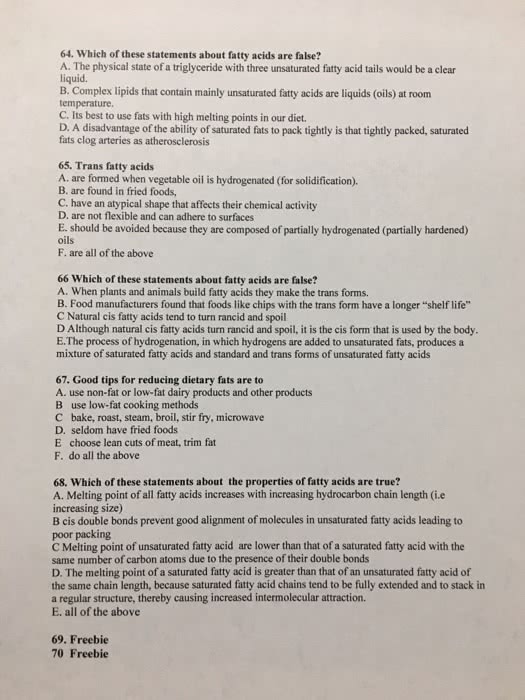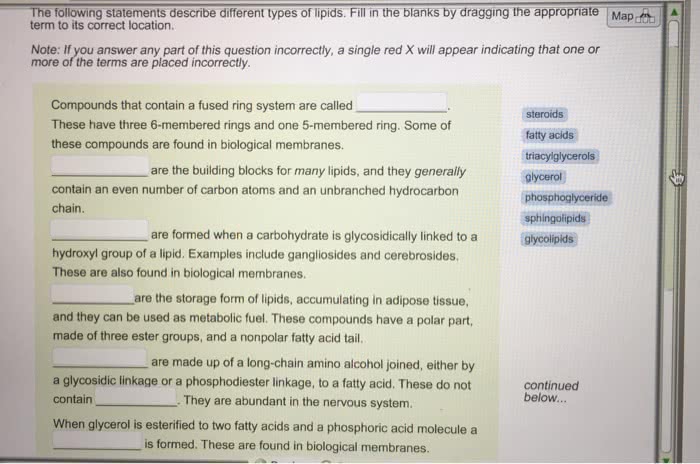B-Oxidation of Trans Fats ljnsaturated fats with trans double bonds are commonly referred to as "trans fats." There has been much discussion about the effects of dietary trans fats on health. In their investigations of the effects of trans fatty acid metabolism on health, Yu and col- Ieagues (2004) showed that a model trans fatty acid was processed differently from its cis isomer. They used three related l8-carbon fatty acids to explore the difference in F oxidation between cis and trans isomers of the same-size fatty acid.
(a) Why did Yu and colleagues need to use CoA deriva- tives rather than the free fatty acids in these experiments?
(b) Why were no lower molecular weight CoA derivatives found in the reaction with stearoyl-CoA?
(c) How many rounds of B oxidation would be required to convert the oleoyl-CoA and the elaidoyl-CoA to cd,s-L5- tetradecenoyl- C oA and trans-A5-tetrade cenoyl- C oA, respectively?
There are two forms of the enzyme acyl-CoA dehydroge- nase (see Fig. l7-8a): long-chain acyl-CoA dehydrogenase (LCAD) and very-long-chain acyl-CoA dehydrogenase (VLCAD). Yu and coworkers measured the kinetic parameters of both enzymes. They used the CoA derivatives of three fatty acids: tetradecanoyl-CoA (C1a-CoA), c'i,s-L5-tetradecenoyl- CoA (cAsC,n-CoA), and trans-L5-tetradecenoyl-CoA (tAsOr4- CoA). The results are shown below. (See Chapter 6 for defini- tions of the kinetic parameters.)
(d) For LCAD, the K^ differs dramatically for the cis and trans substrates. Provide a plausible explanation for this observation in terms of the structures of the substrate mole- cules. (Hint: You may want to refer to Fig. I0-2.)
(e) The kinetic parameters of the two enzymes are rele- vant to the differential processing of these fatty acids only tf the LCAD or VLCAD reaction (or both) is the rate-limiting step in the pathway. What evidence is there to support this assumption?
(f) How do these different kinetic parameters explain the different levels of the CoA derivatives found after incubation of rat liver mitochondria with stearoyl-CoA, oleoyl-CoA, and elaidoyl-CoA (shown in the three-panel figure)?
Yu and coworkers measured the substrate specificity of rat liver mitochondrial thioesterase, which hydrolyzes acyl- CoA to CoA and free fatty acid (see Chapter 21). This enzyme was approximately twice as active with C1a-CoA thioesters as with C 1s-CoA thioesters.
(S) Other research has suggested that free fatty acids can paSS through membranes. In their experiments, Yu and colleagues found trans-L5-tetradecenoic acid outside mito- chondria (i.e., in the medium) that had been incubated with elaidoyl-CoA. Describe the pathway that led to this extramito- chondrial trans-L5-tetradecenoic acid. Be sure to indicate where in the cell the various transformations take place, as well as the enzymes that catalyze the transformations.
(h) It is often said in the popular press that "trans fats are not broken down by your cells and instead accumulate in your body." In what sense is this statement correct and in what sense is it an oversimplification?



